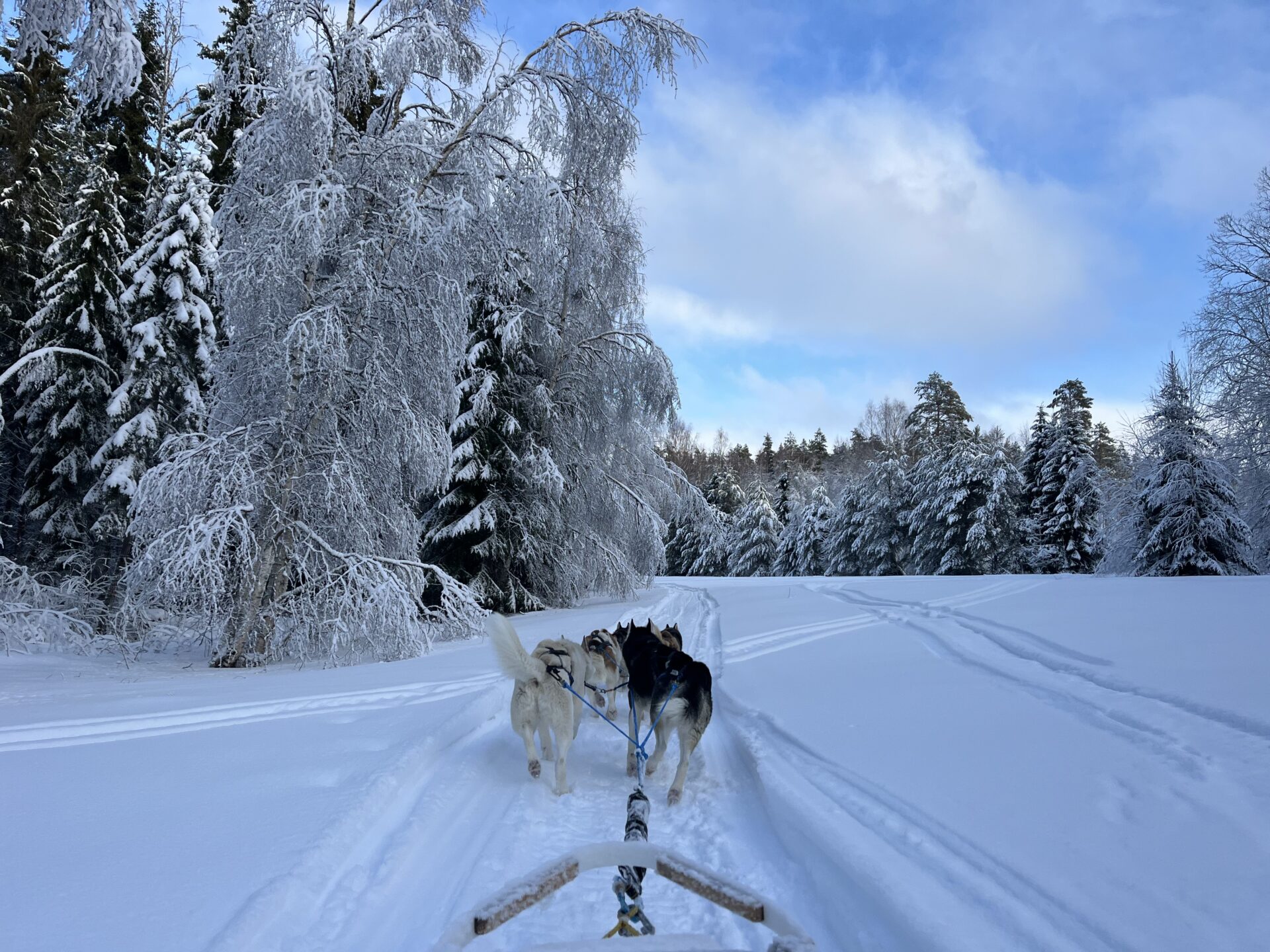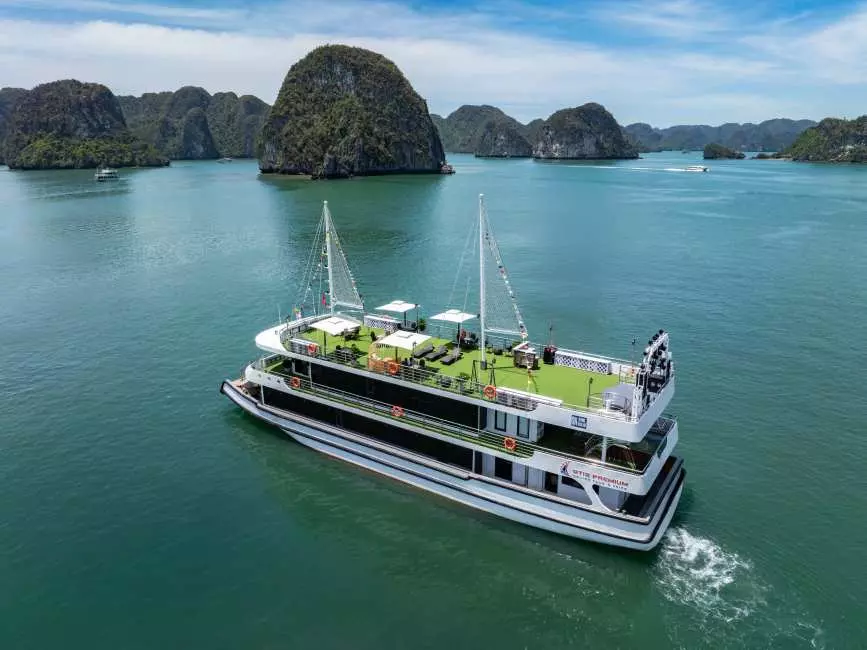From the Balearics to the Canaries, discover all that the most beautiful Spanish islands have to offer
The Spanish islands are bursting with beauty. Very diverse and perfectly preserved, they are full of little treasures, ranging from secret coves with crystal–clear waters to an isolated red-sand beaches and dramatic volcanic landscapes.
And believe us, the most beautiful Spanish islands will have something to appeal to all types of visitors. If you want to spend your holidays in the tranquil waters of the Mediterranean, then the Balearic Islands are the destination for you. Here, nature lovers looking for a peaceful holiday and tireless revellers mingle side by side, especially on the island of Ibiza. But if you’re looking for a total change of scenery in the northern Atlantic Ocean, then the volcanic islands of the Canaries tick all the boxes.
You want to visit them all at the same time? We feel the same! But to help you make a choice, we’ve put together an overview of the seven most beautiful Spanish islands, split between the Balearics and the Canaries.
Gran Canaria
The second–most populated island in the Canary archipelago seduces with the ruggedness of its landscapes. The Canaries are so amazing that they were recognised as a Biosphere Reserve by UNESCO in 2005. Gran Canaria lures you with its subtropical year-round sun and its semi-arid climate, which brings only 14 days of rain per year.
To admire the beauty of the island, start by visiting some of the Gran Canaria’s charming villages. In Tejeda, considered one of the most beautiful villages in Spain, you’ll be able to admire Roque Nublo and the lunar landscape that surrounds it. Artenara, the island’s highest village, is one of the gateways to the rugged, pine-studded gorges of Tamadaba Natural Park.
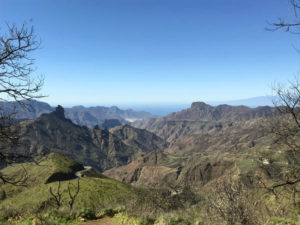
In the north of the island, the Cueva Pintada Museum and Archaeological Park offers a journey back in time. Located in the historic centre of the town of Gáldar, it allows you to admire the murals of the ancient Canarians and immerse yourself in the pre-Hispanic world of Gran Canaria. And in the heart of the island, the town of Teror has an impressive religious heritage, centred on the Basilica of Our Lady of the Pine. Stroll past convents, monasteries and balconied aristocratic townhouses and take snaps of their pastel-coloured façades. The south has a unique natural space – the dunes of Maspalomas. The beauty of this ecosystem bordered by ocean makes for a striking landscape. Don’t miss Puerto de Mogán either, a pretty fishing village by the sea.
And then, when you’ve seen it all, enjoy the wonderful beaches of Gran Canaria, starting with Playa del Inglés, renowned for its festive atmosphere. But if you’re looking for a sheltered beach for a swim in the calm waters, then Playa de Amadores is the spot for you. And to end your stay in Gran Canaria in style, we recommend that you treat yourself to a local wine tasting.

Tenerife
Tenerife, known the ‘island of eternal spring’, is for many the star of the Canaries. Popular since the 1960s, it attracts visitors in search of mountainous and volcanic landscapes. With its subtropical Mediterranean climate and average temperature of 22°C, the most cosmopolitan island in the Canaries is pleasant all year round.
During your stay, make sure to visit some of the pretty colonial towns of Tenerife. In the north of the island, there’s La Laguna – a UNESCO World Heritage Site – and La Oratava, a picturesque town on the slopes of the Teide massif. Then, explore the west coast, stopping at Garachico, a fishing village completely rebuilt following the eruption of the Trevejo volcano in 1706.
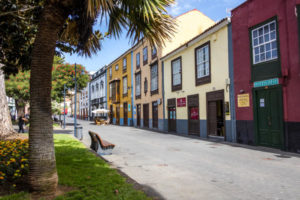
To refresh yourself without losing sight of the beauty of Tenerife’s landscapes, discover the island’s beaches and natural pools. Playa El Bollullo and Playa de Los Gigantes offer spectacular volcanic landscapes while the manmade beach of Las Teresitas, with its palm trees and Saharan sand, offers a different experience. But to admire the sunset, we strongly recommend Playa de Benijo. Surrounded by the Anaga Mountains, its promises to be a memorable show.
After enjoying some of the most beautiful beaches on Tenerife, slowly get back to sightseeing. And among the island’s must-sees, there’s Spain’s highest peak – 3,718 metres above sea level – the famous Teide volcano. The most motivated climb it on foot while the more laidback enjoy the views from the cable car that goes almost to the summit. Then, discover the local products of the island. Taste Tenerife wine, honey rum or Montesdeoca, a cheese made from a mix of goat and sheep milk. The culinary curious can try a guided tour of a banana plantation, one of Tenerife–s star products.
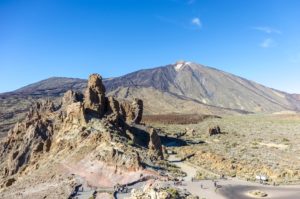
Lanzarote
Who hasn’t dreamed of travelling to Mars? If you can’t wait for a rocket to the red planet, Lanzarote would make a perfect Plan B. Think ochre and black earth, a landscape dotted with 110 volcanoes, cacti as far as the eye can see and blue skies all year round. It might even make a perfect Plan A, once you discover the otherworldly terrains of the easternmost island in the Canaries.
If there’s only one must-see in Lanzarote, it’s got to be Timanfaya National Park. And believe us, you will instantly fall in love with this rugged reserve. Between the absence of vegetation, the diversity of colours and the Hawaiian-style volcanoes, it’s like some from another planet. But beware, it’s so forbidding that adventurers are not allowed ramble in the park on their own.
But the ‘Black Pearl’ offers many other unusual attractions such as El Golfo, a green lagoon about 300 metres long, surrounded by a black–sand beach. Then take the road to the north of Lanzarote to visit the Jameos del Agua volcanic caves. End the day with a visit to an aloe vera plantation, arguably one of the most popular products on the island.
And if you’re looking for relaxing activities, why not treat yourself to an afternoon on one of the beaches of Lanzarote or a wine tasting in the vine-growing valley of La Geria?
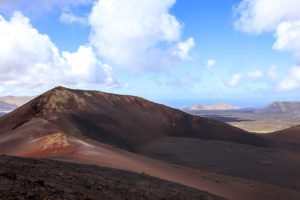
Fuerteventura
An essential destination for water sports enthusiasts, Fuerteventura also has a lot to offer on dry land. Its exceptional fauna and flora, its 150 blond sand beaches and its seemingly eternal sunshine make it a privileged destination.
Windsurfing is the star of water sports. The island is now part of the windsurfing world cup circuit. But Fuerteventura is also an ideal spot for scuba diving. Among the most beautiful Spanish islands, it is also boasts some of the best diving spots in Europe.
To discover its wild nature, follow the paths that lead you to remote sites where Mother Nature is still queen. There’s Betancuria Natural Park, the largest reserve in Fuerteventura. And there’s the Barranco de las Peñitas, one of the least-explored areas on Fuerteventura. It’s like something from a Western movie.
Finally, immerse yourself in the island’s architectural charms. Check out the picturesque hamlet of Vega de Rio Palmas, famed for its Hermitage of Our Lady of the Rock, the patron saint of Fuerteventura. Then, set off to discover the caves of Ajuy, located in the village of the same name, and admire the result of a succession of lava flows in the cliffs.
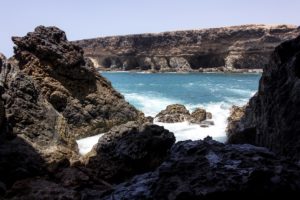
Discover the beauty of the Spanish islands in the Balearic Islands
Majorca
The largest of the Balearic Islands is full of charm and, above all, one of the most preserved islands in the Mediterranean. Its limestone cliffs, its golden plains of olive trees and its exotic beaches with translucent waters seduce those looking to get away from it all.
For a romantic immersion in nature without physical effort, travel through the Serra de Tramuntana aboard a vintage train. This mountain range was declared a UNESCO World Heritage Site in 2011 and is one of Spain’s top 20 natural wonders. Hiking and water sports enthusiasts will be delighted to discover Port de Sóller, a sheltered seaside town that’s ideal for families. Nearby is the village of Sóller, which has magnificent modernist main square. Trek the Alfàbia Mountains or enjoy a hike in the fragrant ‘Valley of the Oranges’. For a cool experience, board the retro wooden tram that connects Sóller in Port-Sóller.
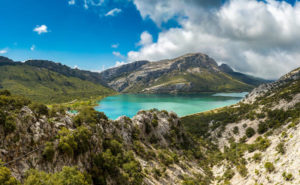
And if you’re more looking for a relaxing afternoon, you won’t be disappointed by Majorca‘s beaches. Secret creeks, cliffs and fine–sand beaches fringed with pine trees are your playground. Among the most charming spots on the island is Coll Baix beach, which can only be reached by foot. For pine-lined, emerald–green waters, head to Cala Tuent. And for an immersion in raw nature, take the road to Cala d’es Matzoc. Along the way, you’ll have the opportunity to admire the prehistoric ruins of a watchtower at the back of the hill. A holiday in Majorca is also a great opportunity to treat yourself to a catamaran cruise and explore breathtaking locations, starting with the Torrent d’es Pareis gorge.
Majorca also has great architectural masterpieces, such as Palma cathedral and the former home and studio of Miró, where there’s an excellent collection of the artist’s works. The island is also full of must-visit villages. Deià, in the Serra Tramuntana, is undoubtedly one of the most charming. But there’s also Artà, a very lively village in summer, which seduces with its stone buildings and narrow streets.
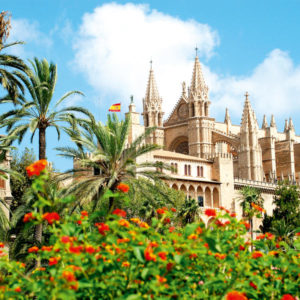
Menorca
Menorca, known as ‘the windy island’, retains a lingering British influence from the century it spent governed by London. It takes its environmental preservation seriously and was declared a UNESCO Biosphere Reserve in 1993, thus ensuring the conservation of 200km of coastline and 70 protected beaches.
The island is bookended by two elegant cities, Ciutadella in the west and Maó in the east. Considered by many to be the more beautiful of the two, Ciutadella boasts a beautifully preserved old town. Explore medieval streets lined with sumptuous palaces, churches and fortresses that all seem to lead to Plaça d’es Born. It’s no wonder that it’s classified as a National Historic Monument. History lovers will be delighted to visit Casa Olivar, an old palace dating from the 17th century in which the Olivar family still lives.
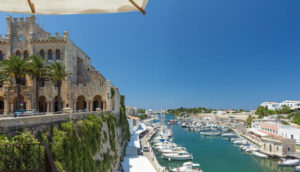
For a breath of fresh air and breathtaking views of every corner of Menorca, go to Monte Toro. At 358 metres, it’s the highest point of the island and worth the detour. If you’re lucky, you may even spot the neighbouring island of Majorca in the horizon. And the icing on the cake – it’s perfect for aficionados of the great outdoors. Potential activities in El Toro include paragliding, cycling and climbing to the summit.
Finally, take the time to chill out on some of Menorca’s 75 dream beaches of Menorca. To discover the wild beauty of the island, head to the red–sand beaches on the north coast. They’re often difficult to access but worth the effort if you already know the busier beaches in the south. Cala Mitjana, the island’s most famous beach, was also voted the most beautiful in Spain by Geo magazine. La Cala Pregonda, which is more difficult to access, charms with its orange-red sand and its wild nature.
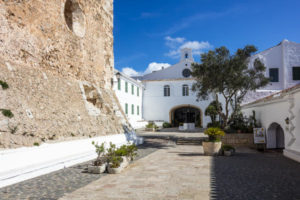
Ibiza
Ibiza, known as the ‘white island’, is world–famous for its hedonistic nightclubs. But the most iconic of the Balearic Islands has more than one string to its bow. Think wild landscapes, secluded coves and pristine white–sand beaches. Standouts include the beach of Las Salinas, popular with celebs – they know a good beach when they see one – and Cala Bassa, famous for its turquoise waters. Party lovers decamp to Platja d’en Bossa, certainly the liveliest beach on the island.
Ibiza also boasts a UNESCO World Heritage Site, based on its biodiversity and culture. The most unmissable pillar is undoubtedly the old town of Ibiza, known as Dalt Vila. Strolling through its whitewashed streets, the result of 2,600 years of history, invites you to travel back in time.
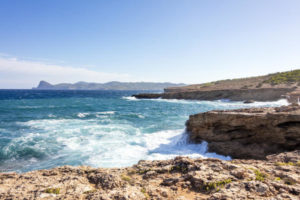
In addition to its historical and cultural riches, Ibiza is also an excellent destination in you’re looking for nature and adventure. Hiking, kayaking, cycling and yoga classes are all activities available on the island. But if you fancy being effortlessly dazzled by the beauty of Ibiza, we recommend visiting the Can Marçà Caves. This former smugglers’ hideout now offers a unique experience during which you can admire its stalactites and stalagmites.
Among the unmissable activities in Ibiza are the colourful hippie markets. The Punta Arabi market is the largest and oldest on the island. Its 500 stalls transport you to a bohemian Sixties atmosphere. There’s a different vibe altogether at the marina of Ibiza, where you can admire the yachts and the kaleidoscopic Boas complex, designed by the renowned French architect Jean Nouvel. And for a truly Ibizan experience, hire a boat and admire the coves, caves and caverns that dot the island’s coastline.
